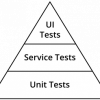Related Content
|
|
Agile Collaboration on Remote Teams The first value in the Agile Manifesto is “Individuals and interactions over processes and tools,” and for many teams, being located in the same place facilitates these interactions. However, being part of an effective, collaborative team is less about location than it is about motivation and good practices. |
|
 |
Simple Ways to Become a Great Listener In this era of multitasking, you probably excel at listening even as you do other things. But it’s not enough to be skilled at listening if, in the process, you convey the impression that you’re not listening. Make sure the people you're communicating with know you're listening to them by employing these simple tips. |
|
 |
6 Signs Your Agile Project Isn’t Really Agile There's a trend of organizations declaring they are agile without actually changing how they develop software. Declaring that an apple is an orange doesn’t make it so. These six key indicators can help you determine whether your agile project isn’t really agile after all—and give you some solutions to help. |
|
 |
15 Traits of Effective Leaders It's helpful for leaders to have technical skills and abilities, but interpersonal attributes are more important for what makes a truly great leader. This list is about attitudes and behaviors—choices you can make to improve your leadership. These fifteen characteristics are a good foundation for effective leaders. |
|
 |
5 Reasons You Should Have More Unit Tests The test pyramid is a valuable visual in agile. In particular, it argues that unit tests should make up the majority of tests, and while agile teams recite this principle, it is often not clear why it is so important. Here are five reasons unit tests should make up the majority of tests written for an application. |
|
 |
Feature Branching Is Not Evil Some people believe branching and pull requests are inherently bad. True, branching done poorly can slow down a team, but advocating for avoiding branching altogether can lead you to ignore the more important goal of an agile process: rapid integration of changes. First, make sure you're considering the right metrics. |
|
 |
The Premortem: Planning for Failure While a postmortem, or retrospective, is done after a project is completed, a premortem is done before the project starts as a way to imagine that the project failed and to explore what went wrong. You list every possible thing that can go wrong, then devise solutions to the most probable risks—before you need them. |
|
|
|
4 Ways to Increase Software Quality and Decrease Test Time Software testers are continually under pressure to test faster without sacrificing quality. By taking the perspective that quality is the responsibility of the entire team, not just the testers, shorter test cycles with higher quality software are possible. Here are four ways the whole team can improve releases. |






